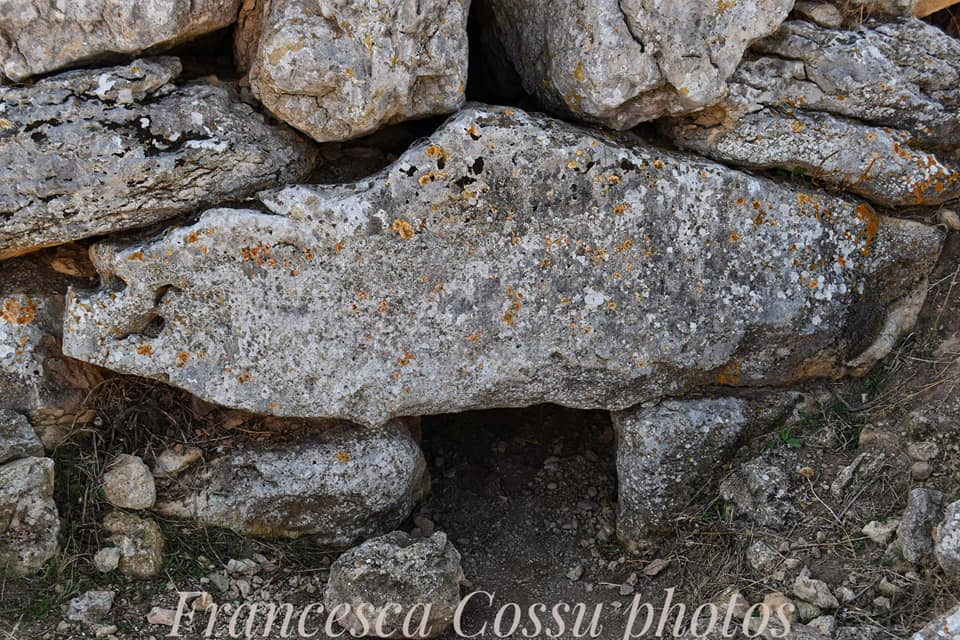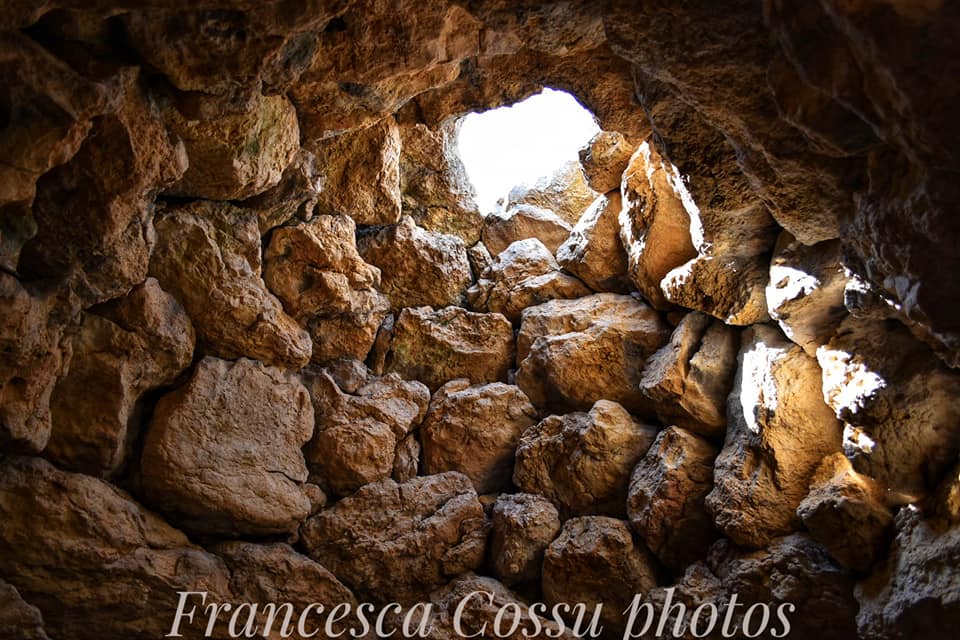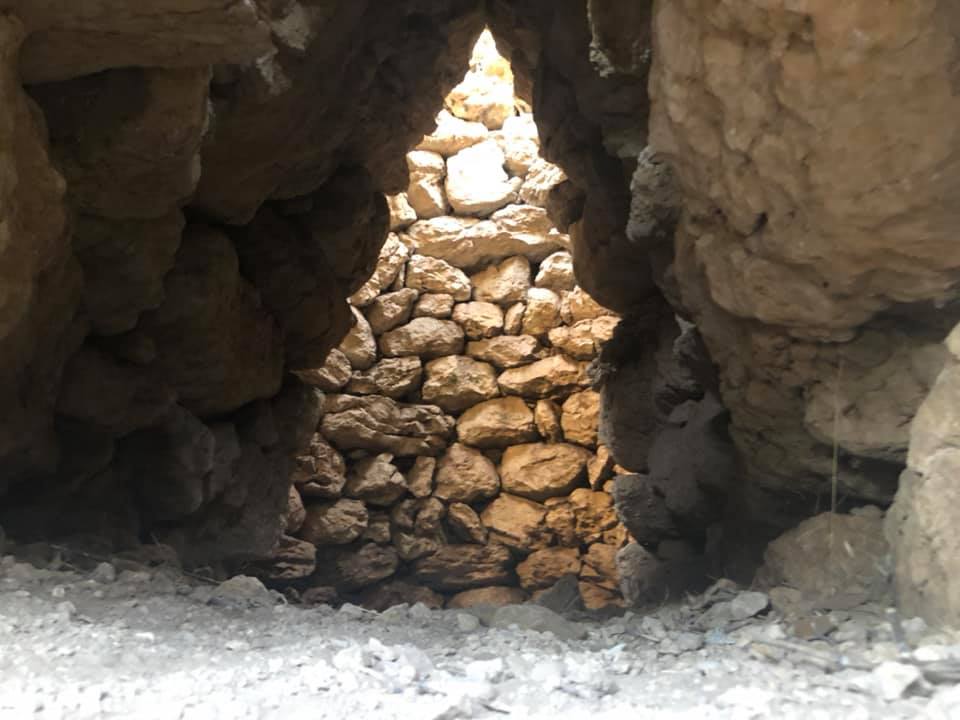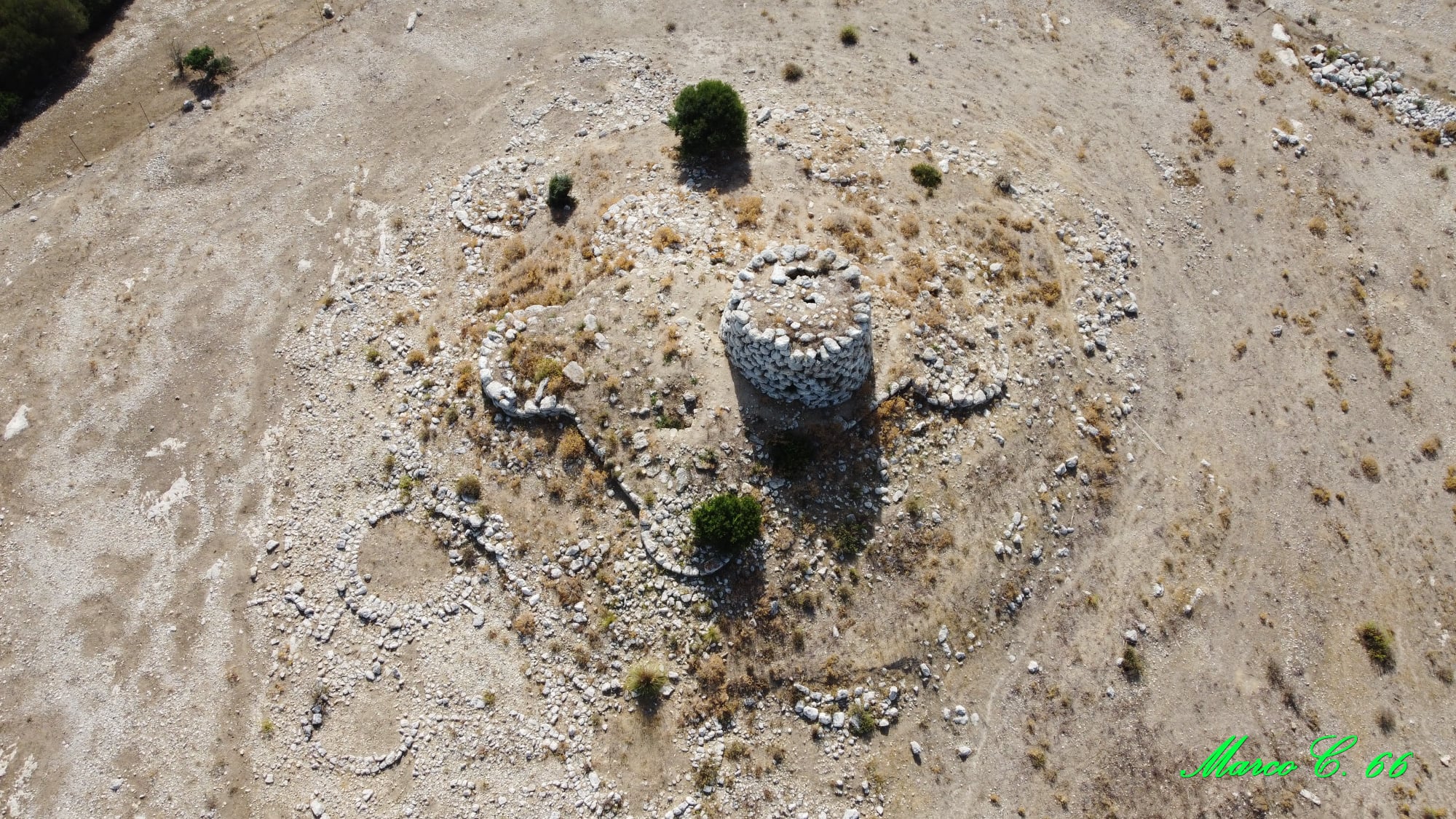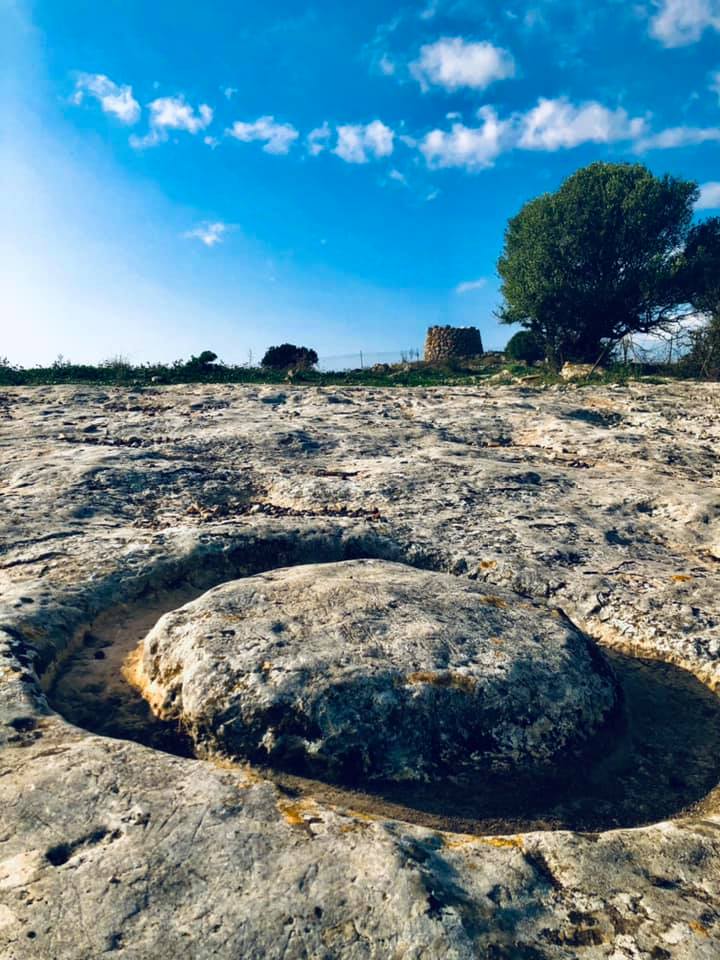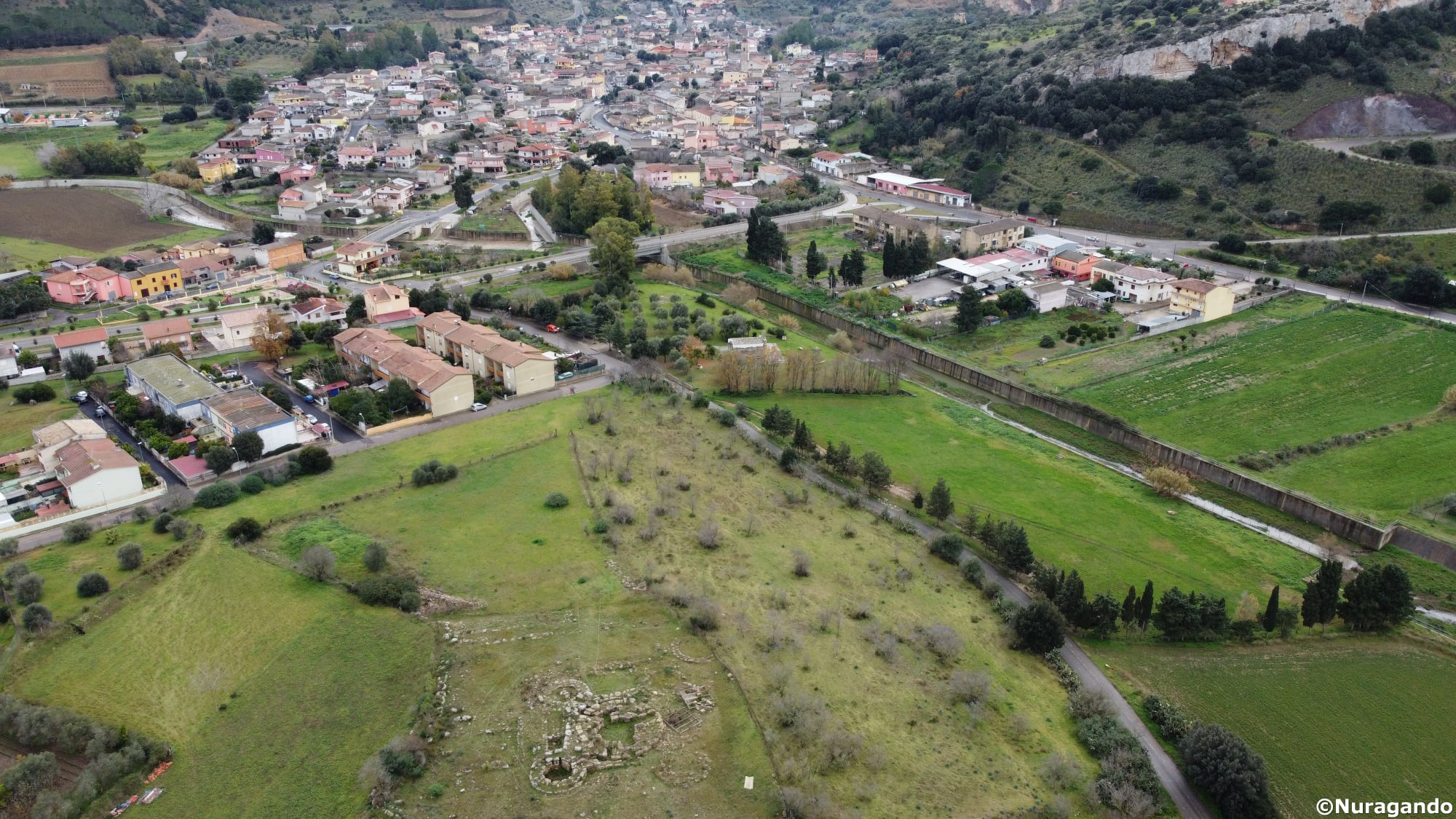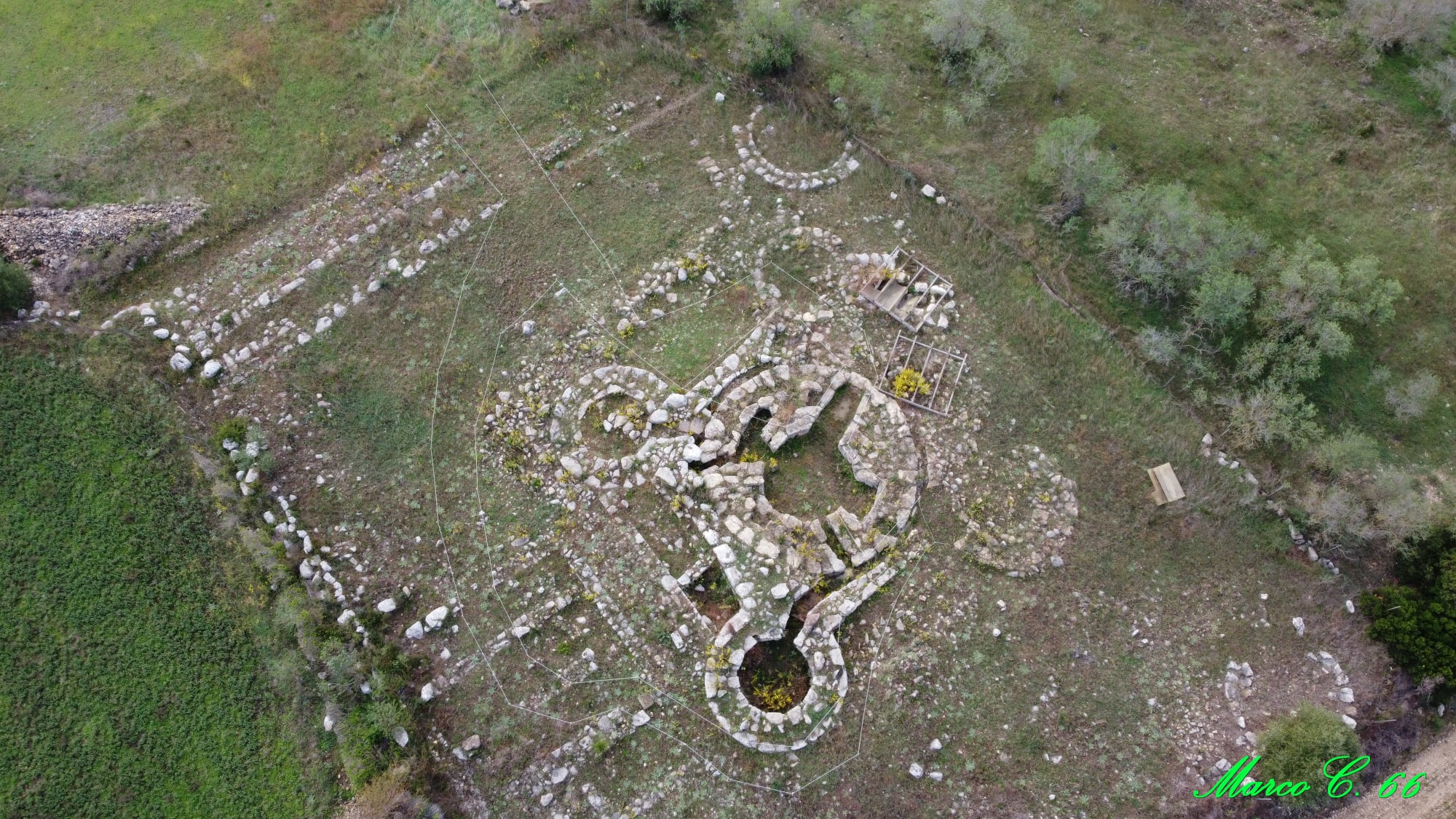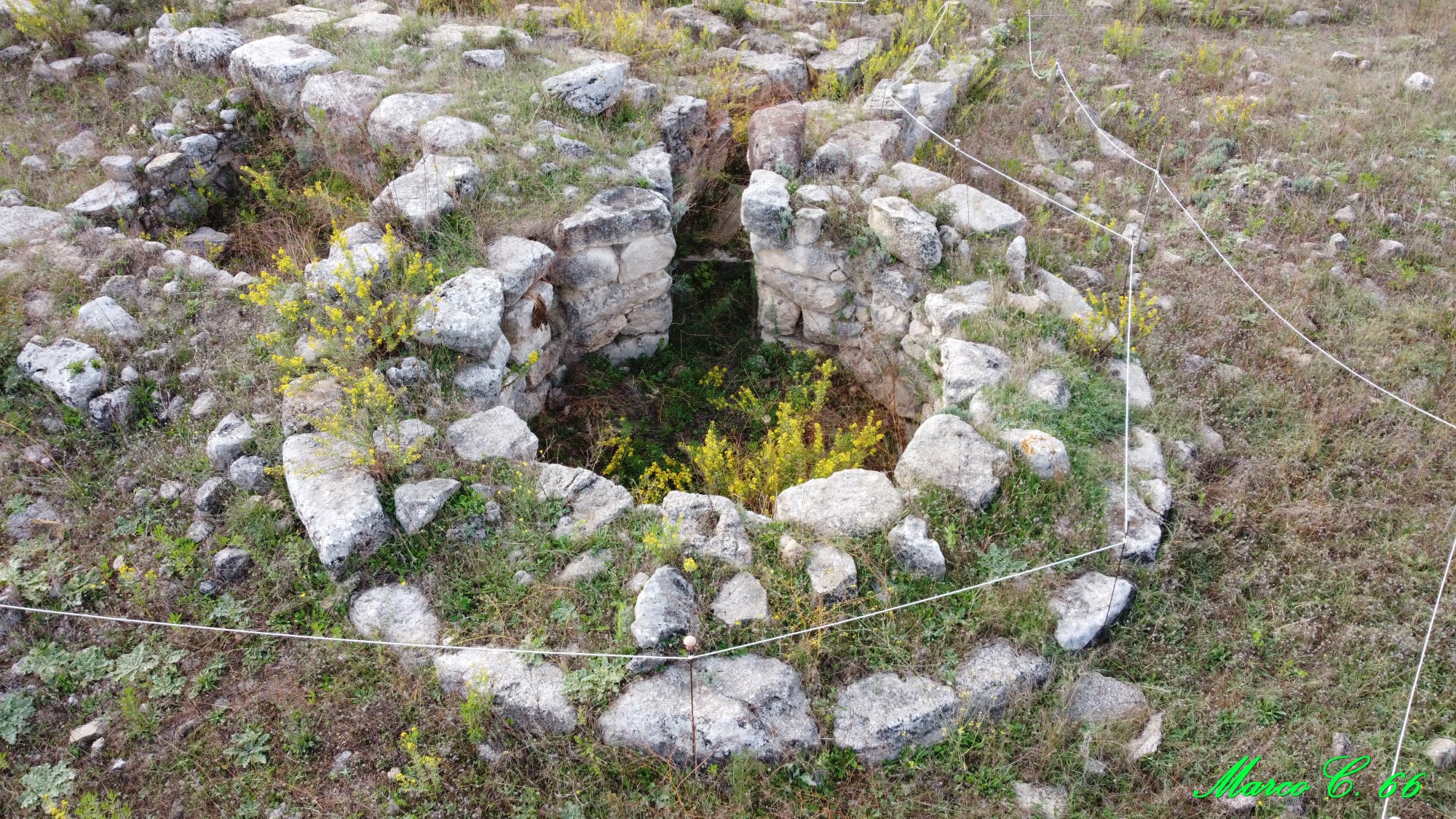24c: Excluding the main tower, the complex of Su Nuraxi, in Samatzai, is largely buried, making it difficult to interpret the parts that compose it. In the space around the nuraghe, there are some circular rooms, perhaps remnants of a village. Also in its vicinity, there is what could be a sacrificial area, called by the Samatzesi “Sa piscedd’ ‘e su casu” due to its particular appearance resembling a type of cheese.
Built with limestone and marl blocks, the nuraghe “Sant’Antonio” of Segariu, also known as “Nuraghe su Pranu,” features a quadrilobed plan layout, with a central tower and four external towers oriented according to the cardinal points… surrounded by an antemurale wall, and the remains of four other towers. Inside the complex, there is a sacred well.
The photos of the nuraghe Su Nuraxi of Samatzai are by Marco Cocco, Lucia Corda, Bibi Pinna, Francesca Cossu, and Ugo Pilia. Those of the nuraghe Sant’Antonio, in Segariu, are by Andrea Mura-Nuragando, Marco Cocco, and Bibi Pinna.

